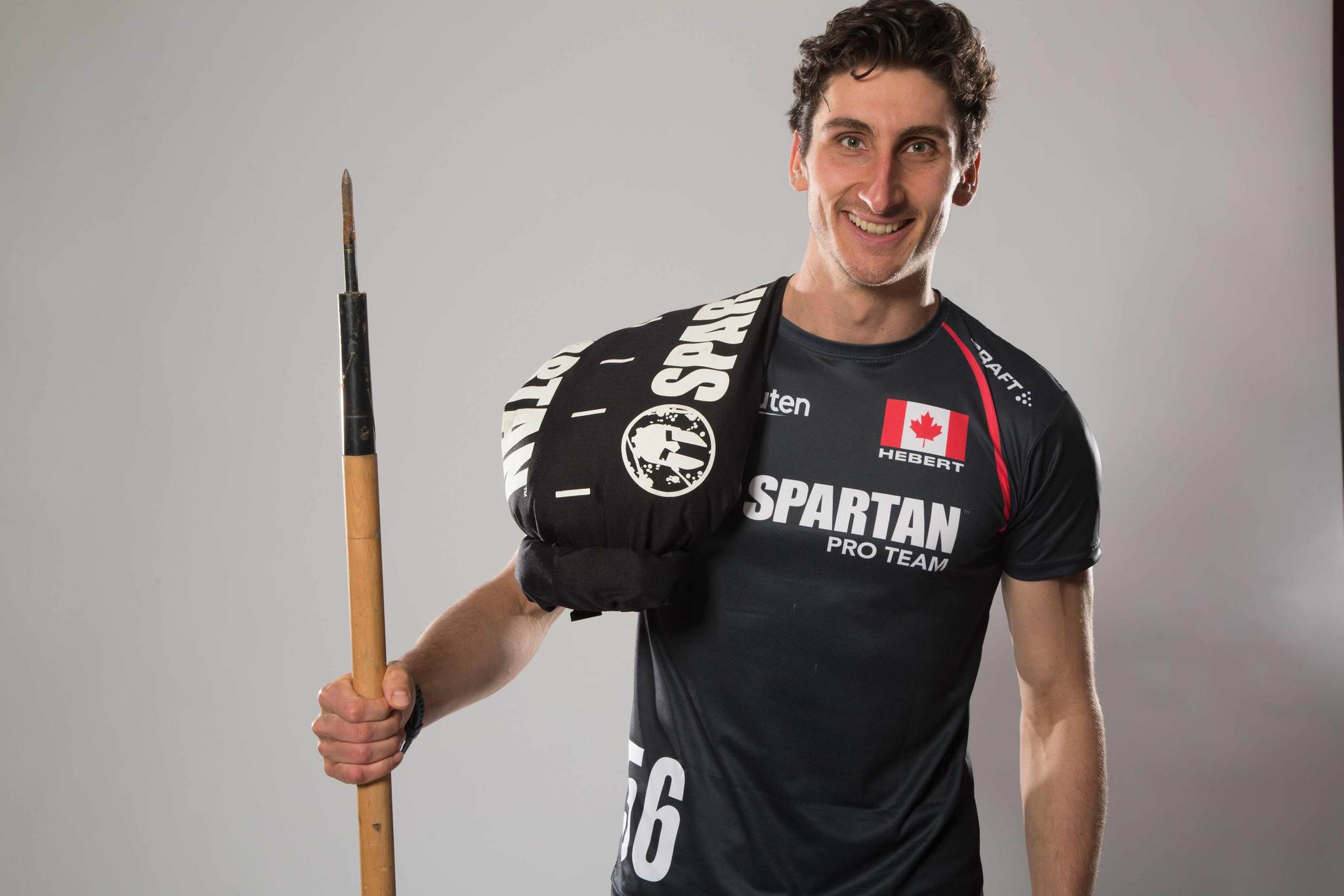Eat Like Canadian Spartan Pro and 'Flexitarian' Samuel Hébert for a Week

Everybody wants to know how the highest-level athletes fuel their bodies for elite competition. What are their go-to foods? Which diets do they rely on for max performance? How do they strategically break up their day? In Eat Like a Champion, a recurring franchise, we give you the inside scoop on our professional athletes' dietary habits: what they're eating, why they're eating it, and when they're eating it. Follow their lead and fuel like a champion.
One of Canada’s best OCR athletes, Spartan Pro Samuel Hébert is based in Quebec. A kinesiologist who has been in the sport for a decade now, he has made a considerable investment in search of a diet that clicked in regards to athletic performance.
Trying the Popular Diets
Name diets that are often marketed to endurance athletes include everything from low-fat diets (like the Pritikin Diet), to the high-carb diets runners gravitated toward in the initial running boom (highlighted by pre-race pasta dinners), to low-carb diets like the Atkins diet and the ketogenic diet.
Related: Ketogenic, Paleo, Fasting: Which High-Performance Diet is Right for You?
“I have tried plenty of the popular diets for at least four to six weeks in the past five years,” he says. “I am now what I call a flexitarian! I don't follow any specific diet.”
Changing the Focus

What Hébert found was that there is no one diet for him, instead focusing on his own unique needs and individual variation.
“There is not a specific amount of macros or macro ratios that made a huge difference in my performance,” Hébert says.
The more aggressive the macro split — for example, a ketogenic diet that restricts carbs to 25 grams or less per day — the less success Hébert was able to achieve.
Related: Low-Carb vs. High-Carb: Which Diet Should You Eat? The Surprising Truth
“This was especially true with extreme approaches that banished one prime macronutrient completely, like avoiding all carbs, or avoiding all fats,” he says.
Listening to the Body
What clicked for Hébert was flipping the general equation when it comes to diet. Rather than forging a specific ratio of macros — like 40% carb, 40% protein, and 30% fat (the Zone Diet) — into his diet, he takes the idea of listening to the body and allowing his body to lead his choices when it comes to the foods that deliver the macronutrients.
Timing Meals for Digestion and Energy
Meal timing also hinges on Hébert’s listen-to-your-body approach.
“A couple of years ago, I stopped eating before my morning training sessions,” he says. “I had been forcing myself to eat breakfast early every morning before training. I was doing this because of some misconceptions and cultural habits.”
When Hébert let go of the breakfast-first practice and adopted his flexitarian thinking, the result was more energy and less stomach trouble.
“It really changed the quality of my training by reducing digestive discomfort and bringing me the energy I need at the right time,” Hébert says.
Less Sugar, Less Inflammation
Another positive discovery in Hébert’s nutritional experimentation was in regards to dealing with injury.
“I reduced my refined sugar intake and it helped me drastically lower inflammatory levels in my body,” he says. “This helped me reduce inflammation with a specific injury. After two weeks I was feeling and seeing a difference in my body. After four weeks, my cravings for sugar were reduced by 75%.”
Related: 5 Foods You Should Eat to Beat Inflammation
Hébert says that a key to success when it comes to getting off of sugar is patience, to understand that it takes time to banish the cravings.
When to Use Simple Carbs
In tune with his flexitarian diet, there is a time and place for refined sugar.
“You can prioritize fast carbs with low fiber just before the race,” he says.
This is a piece of advice he offers those who are new to OCR. It’s quick energy to the muscles with minimal demands being made on your digestive system.
“Remember that the goal of your nutrition is to bring energy to your body when needed," he stresses. "Not to add weight to carry or to divide your blood flow between the leg muscles and your digestive system.”
The following is an example of how Hébert pursues his nutrition.
Early Morning/Pre-Workout
- 500 milliliters to one liter of water
Hébert drinks the water at the start of his morning ritual, followed by a short run, a mobility routine, and breathing-meditation time.
Morning Snack: Fruit and Greens Smoothie
- 750-milliliter smoothie
“I use a variety of fresh greens according to what I have left in the fridge, plus protein powder, a banana, and frozen blueberries,” he says.
Related: 5 Protein Shake Recipes You'll Actually Want to Drink
Breakfast: Eggs and Toast
- Three to four eggs (hard boiled or over-easy)
- Two pieces of toast with honey
Per Hébert’s flexitarian model, breakfast hinges on what kind of training he has scheduled for the day.
Lunch: Yogurt Plus
- 500 milliliters of greek yogurt
- Seeds
- Granola
Afternoon Snack: Nothing Fancy
- Granola bar
- Apple
Dinner: Balanced Nutrition
- Big fresh salad
- Chicken or fish
- Quinoa or brown rice
Hébert’s dinner exemplifies the balance of his flexitarian approach, with plenty of antioxidants and phytonutrients in the salad, quality protein in the chicken and fish, and the quinoa or brown rice to make sure there’s enough energy being taken in.
Evening
- A bowl of cereal (his version of a dessert)
